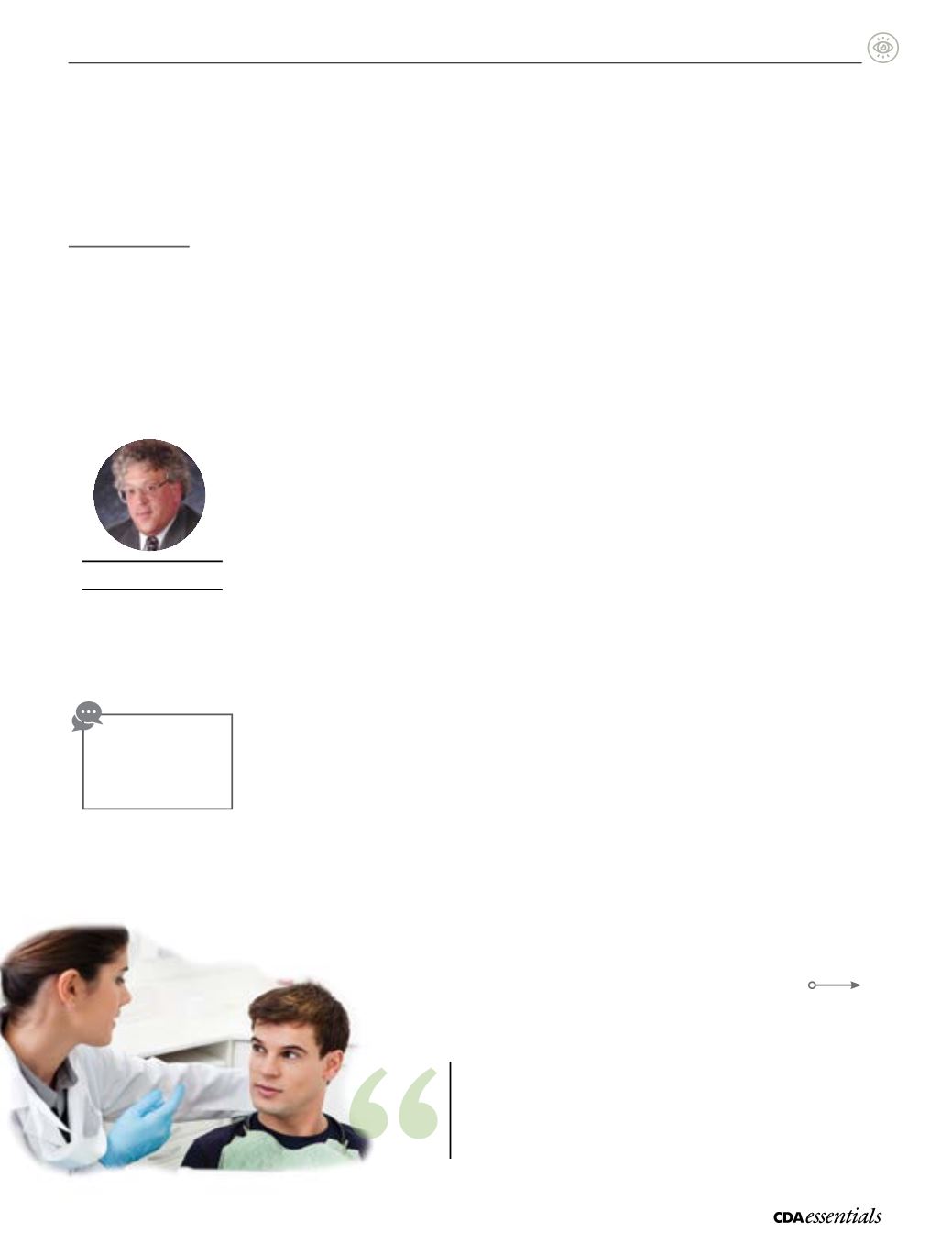

25
Volume 1 Issue 7
|
I
ssues and
P
eople
What is the current state of the science
with regard to the management of early
carious lesions?
The science is evolving as we speak, and it’s
evolving on two different fronts: (1) how we
detect and measure lesions; and (2) how we
treat them.
In your practice, do you manage caries
differently than you did 5 or 10 years
ago?
Yes, I do. That said, changing our way of
managing caries is very difficult because of
time constraints and shifts in thinking. We
have to consider risk factors, home care and
different products, on top of thinking about
how we measure lesion progression and
when, if and how we replace restorations.
As practitioners, we need to stop and ask
ourselves “If I find a lesion, do I immediately
pick up my handpiece as I was trained to
do as a clinician, or do I begin to look at
preventive measures and products that may
help stabilize the lesion?”
Are you also engaging with your patients
in a different way?
Definitely! I want to educate my patients
about what they need to do, so they stay
engaged and involved in the treatment plan.
Our patients don’t approach their oral
health the way they used to. There’s a lot
more discussion now, and there’s a sea
of information patients read online—be
it accurate or not—on various disease
processes, including caries. Our job as
clinicians must include patient education.
Do you believe that the North American
approach is in tune with the evolution
of the science underpinning caries
management?
I don’t believe so; there’s a need for a bigger
shift. We’re still very much focused on
what caries causes—holes, destruction of
restoration margins, etc. We need to move
our focus to questions such as “How did it
get there and why?” and “Why are some
of my patients able to resist this disease
process?” We also need to go back to the
basics and refer to caries as a disease.
Is it time to change our approach to
CARIESMANAGEMENT?
Dr. Stephen Abrams is a man of many talents: a clinician with over 34 years of practice experience, chair of the Ontario
Dental Association’s Dental Benefits Committee for the past 16 years, and a prolific author who has published over
100 articles in international journals and publications.
But his contribution to dentistry does not end there. An innovator and entrepreneur, Dr. Abrams has also been redefining
caries management. His company, QuantumDental Technologies, developed the Canary System used for the early
detection and monitoring of carious lesions. CDA met with Dr. Abrams to discuss developments in caries management.
Stephen Abrams
DDS
Our patients don’t approach their oral health
the way they used to. There’s a lot more discussion
now and our job as clinicians must include
patient education.
Listen to the
interview at
oasisdiscussions.ca/2014/08/05/mcm


















